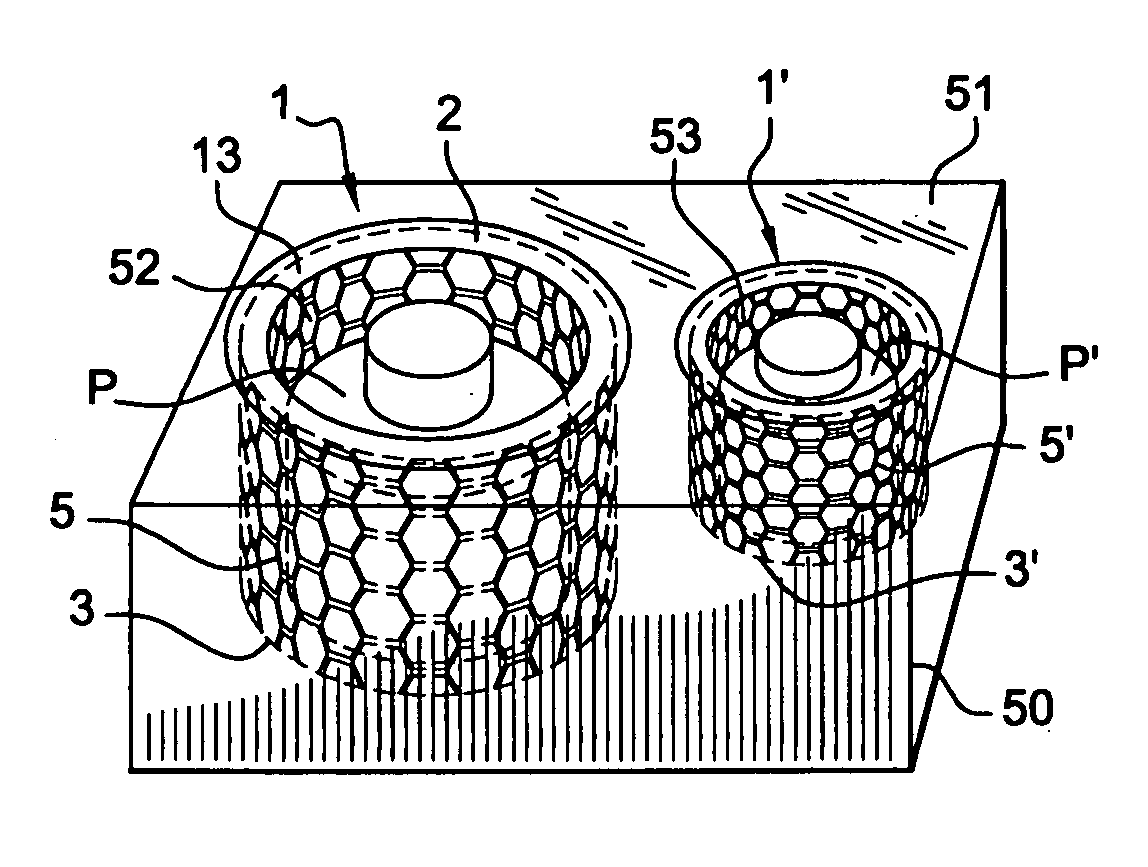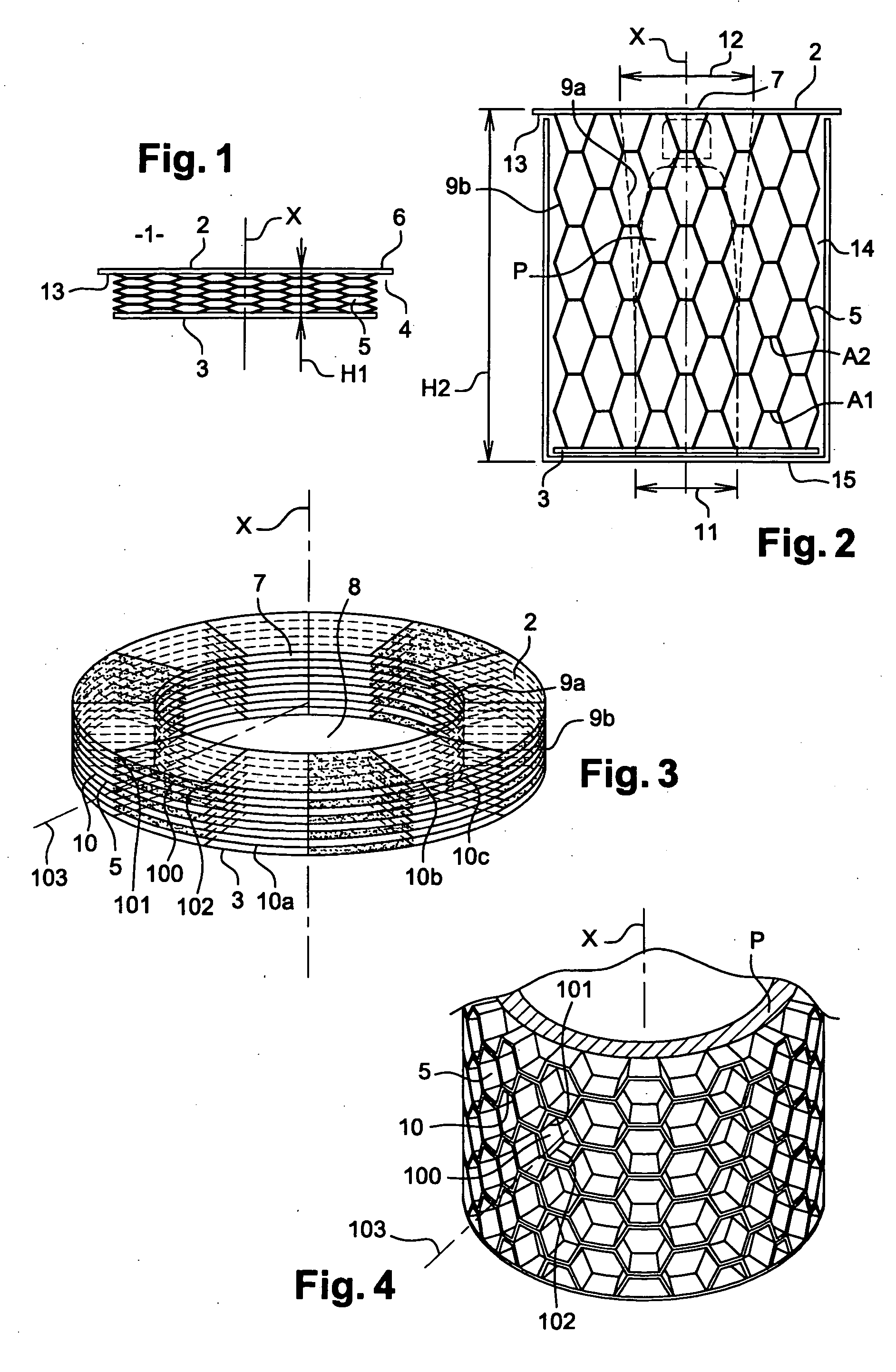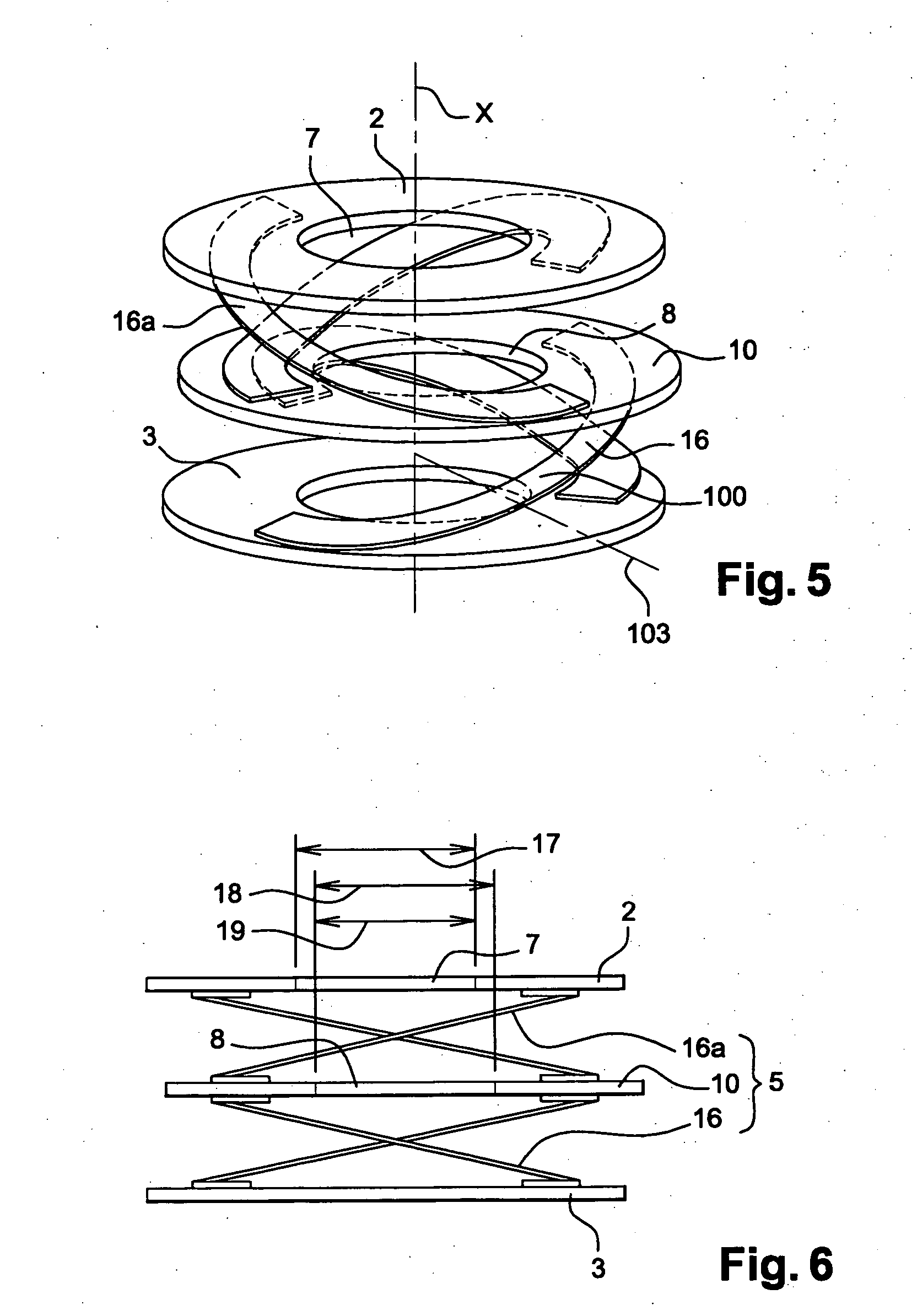Retaining device
a technology of retaining device and sleeve, which is applied in the direction of flexible cover, container, domestic articles, etc., can solve the problems of not being able to compress on itself, being only radially extensible, and not being able to adapt vertically
- Summary
- Abstract
- Description
- Claims
- Application Information
AI Technical Summary
Benefits of technology
Problems solved by technology
Method used
Image
Examples
Embodiment Construction
[0047]FIG. 1 illustrates a retaining device 1 according to the invention. The device 1 includes a plate 2 and a support 3. The support 3 is attached to a lower face 4 of the plate 2 by a connecting arrangement 5. The connecting arrangement 5 can be deformed so that the plate 2 moves away from the support 3 in a movement parallel to an axis X.
[0048] According to the example of this embodiment, the plate 2 is defined in a plane such that the lower face 4 and the upper face 6 of this plate 2 are parallel to this plane. Preferably, the plane of the plate 2 is defined orthogonally to the axis X.
[0049] By way of example, the plate 2 can be obtained by cutting from cardboard having a thickness, for example, on the order of 1 to several millimeters. The outline imparted to this plate 2 can be square, rectangular, circular, ovoid, or any other geometrical shape. Generally, the shape imparted to this outline is dependent on the end use of the retaining device. In effect, the plate 2 is gene...
PUM
 Login to View More
Login to View More Abstract
Description
Claims
Application Information
 Login to View More
Login to View More - R&D
- Intellectual Property
- Life Sciences
- Materials
- Tech Scout
- Unparalleled Data Quality
- Higher Quality Content
- 60% Fewer Hallucinations
Browse by: Latest US Patents, China's latest patents, Technical Efficacy Thesaurus, Application Domain, Technology Topic, Popular Technical Reports.
© 2025 PatSnap. All rights reserved.Legal|Privacy policy|Modern Slavery Act Transparency Statement|Sitemap|About US| Contact US: help@patsnap.com



